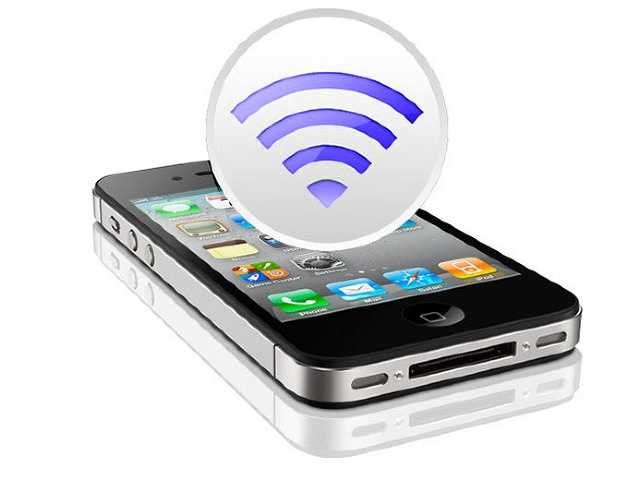You know you can share it Internet σύνδεση σας στους φίλους σας μέσα από το Android τηλεφώνου σας; ή αλλιώς να κάνετε το τηλέφωνό σας Hotspot.

Many novice users are unaware that today's smart phones have the potential to become portable wireless internet access points. The process is called a hotspot and essentially it gives access to the internet via Wi-Fi of your Android phone to your friends who have no direct connection with him.
The utility of such a feature is enormous, as long as you have imagination. There are many examples to use. You can go to your country house and give your children internet access, of course you haven't yet purchased some kind of connection to a mobile phone provider.

Your home connection may still be down and you may need to give internet access to some of your devices.
But an example is that if your friend who you drink coffee with asks for your phone to see something on the internet, because his has run out of units, you can instead of giving him your device, simply give him access to the internet. The applications hotspots are many but they also present risks. Let's see in this article, first how to make your Android phone a hotspot and then how to minimize the risks.

First of all, the steps below to set up hotspot on a mobile phone may differ depending on the manufacturer of your phone and the version of Android it is running on. Our presentation is based on one Xiaomi with Android 7 version, but if you have any other brand of phone with a little bit of searching you will succeed to get to the right setpoints.
Android has included some form of Wi-Fi hotspot from the 2.2 Froyo version onwards, so it should be available on your phone.
Set up Hotspot on Android
Step 1: To create a portable Wi-Fi access point, go to your device's settings. Usually the settings have a gear as a symbol and you only have to tap once to access them.

Step 2: The next step varies depending on your device. On Xiaomi, click on "Portable Access Point" under the Wireless & Networks group and then "Set up Portable Access Point".

On a Samsung device, click "Connections", then "Mobile Hotspot and Tethering" and then "Portable Access Point" (Mobile Hotspot). On other phones, press "Network & Internet", then "Hotspot & Tethering" and then tap "Set up Hotspot Wi-Fi" on "Portable Hotspot Wi-Fi".
Step 3: On most Android devices, all the settings for the hotspot are in this menu. Select an appropriate network name (where it says SSID), a password, a Wi-Fi security option, and then click the check mark to Save.

If you are using a Samsung device, tap the hamburger menu in the upper left corner, then tap "Configure Mobile Hotspot" to access these settings. You can then adjust your network name, password, and Wi-Fi settings in more detail. When done, click "Save".
Enable Hotspot on Android
After setting up the hotspot you will now need to enable it. In Xiaomi, press the "Portable Port" switch. On most Android devices you can find it as "Portable Wi-Fi Hotspot" or "Portable Access Point" (on Samsung).
Android can alert you to increased data and battery usage. Press “OK” to confirm. The Wi-Fi hotspot is now active and ready for connection.

You should now have your hotspot displayed on a third Wi-Fi device, just like any other Wi-Fi network in your area. Use the password you selected during setup to sign in.
You can also turn your hotspot on or off in one go through the quick actions you will find if you swipe down from the top of the screen. The switch is usually called "Access Point" or "Wi-Fi Hotspot" or "Mobile Hotspot" (depending on your device). Every click on it turns it on or off.

If you plan to connect multiple devices to your mobile phone, you should keep in mind the use of your data. On Android, you can monitor and restrict data usage so that it doesn't exceed a limit. If you apply a data limit to your device, Android automatically disables your data connection when you reach that limit.
You can also disconnect devices that are connected to your hotspot and attach them to a list of blocked devices. You can set how many devices you want to connect to you.
Finally, this way you can only share the data connection you have from your provider. You cannot, for example, make a hotspot another Wi-Fi connection that provides you with internet access.
Connection security
First of all, don't open your hotspot without setting a strong security code. THE code 12341234 that we defined in the previous photo only serious cannot be.
Secondly if you have the kind of security you prefer the "WPA2". Do not use "WEP" because it breaks easily.
Lastly, regularly check the limits you set. If you want to access 2 devices set the corresponding switch for 2. Do not leave it on 4 as it was from the previous time.

Check the names of the devices that are connected to you and if you don't recognize a name, throw it out without a second thought.
Alternatives
You can create a Wi-Fi hotspot with third-party applications available on the Google Play Store, but the built-in Android method works well for most users who want to set up a Wi-Fi network for use with other devices.
However, if your carrier does not allow you to connect other devices to your phone, or restricts the use of data for hotspot-connected devices, then the built-in feature may cause problems.
Applications like PdaNet + do a similar job, but you may need to access your phone's root to completely bypass the restrictions on your Android phone. And keep in mind that this may violate your phone's warranty terms.





